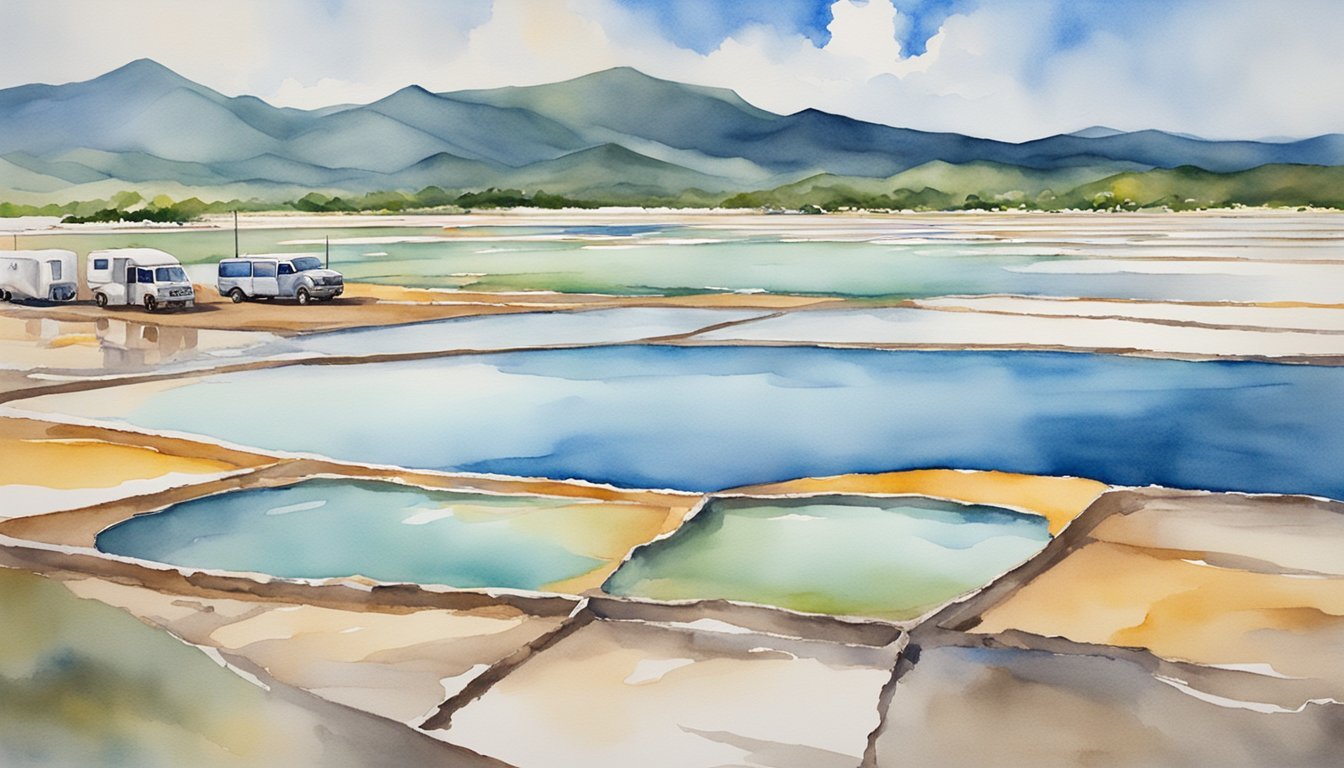Exploring the Cabo Rojo Salt Flats
The Cabo Rojo Salt Flats, known locally as Las Salinas, are a striking natural wonder offering a unique blend of scientific interest and outdoor activities, positioned on Puerto Rico’s picturesque southwestern tip.
Geography and Location
Positioned on the southwestern tip of Puerto Rico, the Cabo Rojo Salt Flats are part of a larger ecosystem that includes the Cabo Rojo National Wildlife Refuge. The flats themselves cover approximately 1,200 acres and are near major cities like Mayaguez and Aguadilla, making them accessible by car or public transportation.
Natural Attractions
These salt flats are not only a place for salt production but also a canvas of captivating colors. The salt pans’ pink water is the result of algae and brine shrimp, which provide food for a variety of bird species. A visit to the nearby Los Morrillos Lighthouse offers panoramic views of the flats, a contrast to the blue Caribbean canvas.
Biodiversity and Ecosystems
The region boasts a unique ecosystem, ranging from mangrove forests to dry forests. Among these diverse habitats, a variety of flora and fauna thrive, including many migratory birds. The lagoons and salt marshes support a rich biodiversity that captures the essence of Puerto Rico’s natural beauty.
Recreational Activities
Visitors can indulge in an array of recreational activities, such as hiking on nature trails and bird watching exotic species like pelicans and endemic birds. Mountain biking trails offer an adventurous way to explore, and nearby beaches like Playa Sucia extend opportunities for relaxation and leisure.
Cultural and Commercial Importance

The salt flats of Puerto Rico, particularly the pink salt flats in the region of Cabo Rojo, hold significant cultural and commercial value. They reveal a unique blend of the island’s history, economic activity through salt harvesting, concerted conservation measures, and their emerging role in eco-tourism.
Historical Significance
The salt flats of Puerto Rico have been used for salt mining since the times of the indigenous populations. The Spanish colonial period saw the growth of salt extraction as a commercial activity, leveraging the high salinity levels conducive to salt crystal formation. These historical practices led to a robust cultural heritage centered around salt production.
Salt Harvesting Process
In Cabo Rojo, the process of salt harvesting uses natural evaporation to concentrate the brine until only salt crystals remain. This traditional method involves channeling seawater into shallow ponds where the heat of the sun and the wind work in tandem, increasing the water’s salinity levels over time. Algae and the microorganism Dunaliella salina contribute to the pink hue of the flats by producing carotenoids.
Conservation Efforts
Recognizing their ecological and educational value, the U.S. Fish and Wildlife Service manages these areas as a part of the National Wildlife Refuge. Regulations are in place to protect the unique biodiversity, maintaining the habitat for numerous aquatic species and around 40,000 migratory birds that visit annually.
Visiting and Accessibility
Visitors can explore the beauty of the salt flats and their pink lake against the backdrop of La Playuela Beach and the historic lighthouse near Lajas and Combate. Accessibility to the flats is facilitated by parking and a visitor center that includes educational displays and a small gift shop. The area serves as a significant point of interest for its uniqueness and the panoramic views it offers. Birdwatchers and nature enthusiasts will appreciate the diverse wildlife that inhabits the region, including migratory birds that frequent the salt flats. Photography lovers will also find plenty of stunning scenes to capture, from the vibrant hues of the pink lake to the striking contrast of the blue Caribbean waters. For those planning future travels beyond Puerto Rico, researching affordable hotels in Italy can help ensure a budget-friendly yet memorable European getaway.

